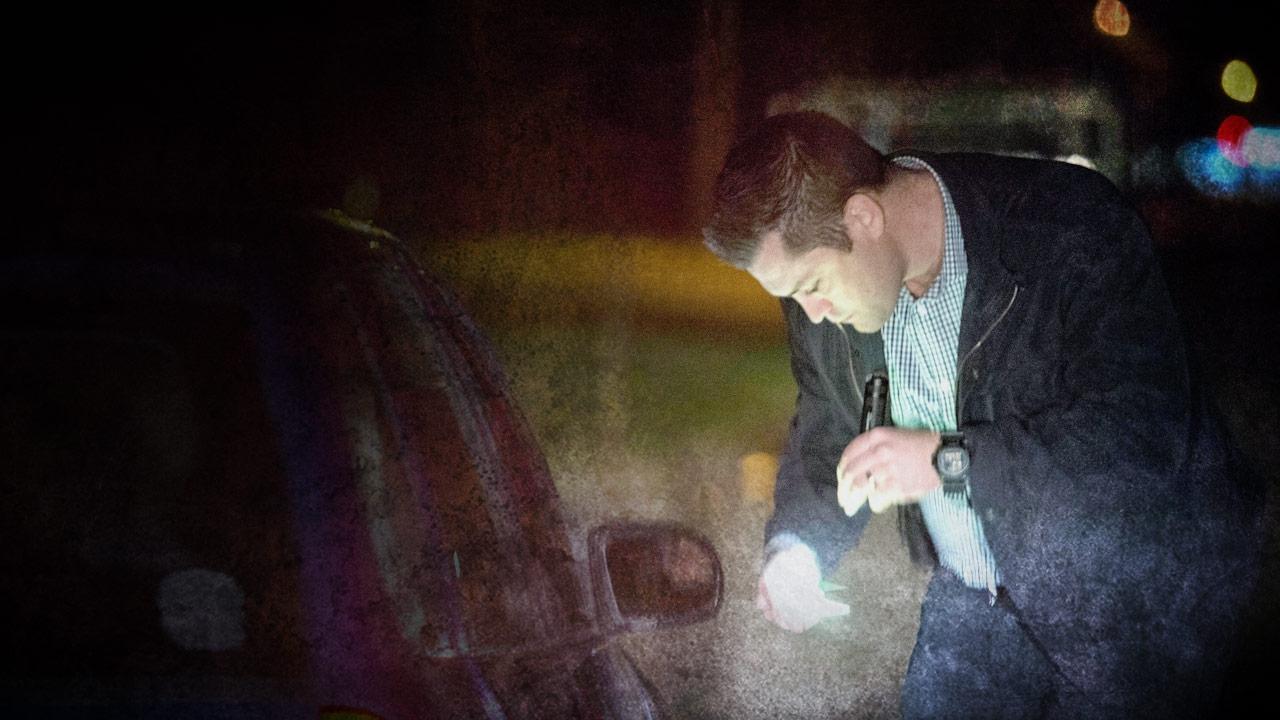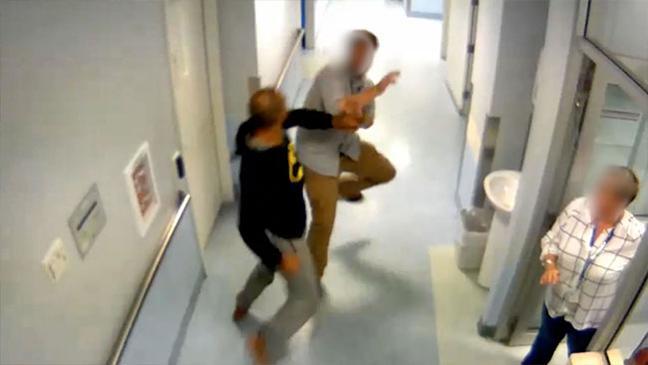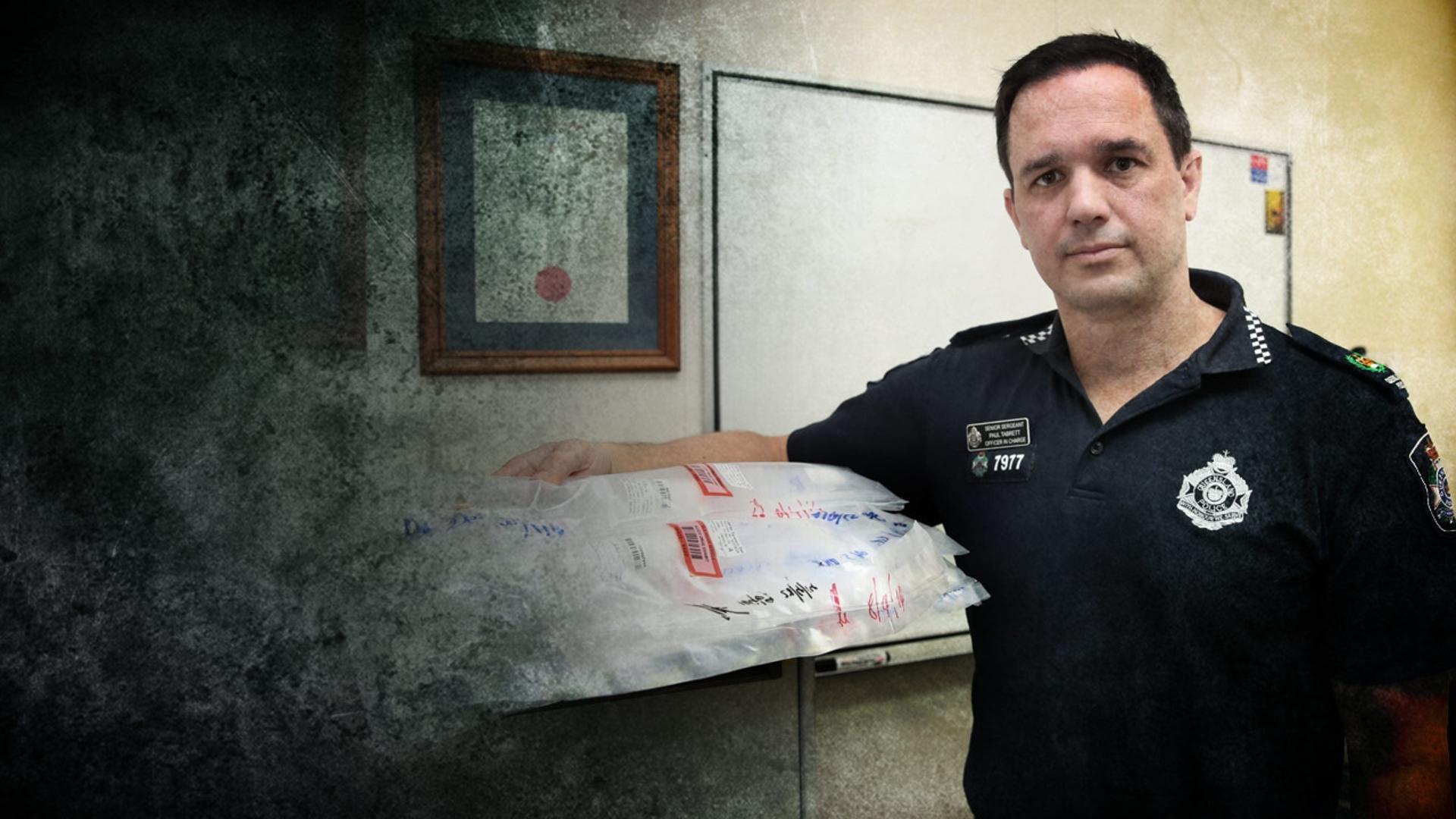A GENERATION of Queenslanders is at risk of being lost to an ice epidemic that is outpacing all efforts to stop its insidious spread through the state.
A four-month investigation by The Courier-Mail into ice, the most addictive and damaging form of methamphetamine, has uncovered evidence that authorities are failing to turn the tide against the drug, despite vigilant policing and millions of dollars of government funding.
Across the state, ice seizures and arrests, hospital admissions, deaths and the number of children being removed from addicted parents have all soared in the past few years, with many indicators continuing to climb.
The ongoing surge of ice-related problems has placed police, courts, hospitals and community services under severe stress, with many reporting the drug is the number one problem they are facing.
Detective Superintendent Jon Wacker said police had the resources to “deal with the supply side” but it would remain a problem as long as demand existed.
“If you told a person there’s a black snake in the corner and it’s dangerous, stay away from it, people will stay away. Yet people are daily consuming dangerous drugs that will kill them,” he said.
The Crime and Corruption Commission listed ice as the state’s fastest-growing illicit drug market. It added that the market posed the “highest level of risk to Queensland, due to the high level of organised crime involvement, its ready availability, and the significant harm the drug causes users and the community”.
Some of the most devastating effects are being borne by young children, with fears that research on the damage done to the foetuses of meth-addicted mothers has failed to keep up with the escalating problem.
Child services reported this year that a third of children who came into department care in 2016 had parents who use, or had used, ice.
A total of 746 children were in this category, with 60 per cent suffering neglect, about a third subjected to emotional harm, and 11 per cent physical harm.

The ice market poses the highest level of risk to Queensland, due to the high level of organised crime involvement and its ready availability
Department of Communities, Child Safety and Disability Services Deputy Director-General Merrilyn Strohfeldt said the drug was having a devastating impact on the state’s most vulnerable.
“Ice has become the number one issue that is driving our concerns in child protection, and it’s continuing to climb,” she said.
“And it’s not just ice on its own; it’s also associated with those other issues, such as mental health disorders, and family and domestic violence.”
The Courier-Mail has heard of one ice-addicted couple who have had 11 children taken from their custody, and mothers who have had to hand over their newborn children before leaving the maternity ward.
While general methamphetamine use has declined across the country in the past decade, hardcore ice use has surged since 2010.
According to the most recent National Drug Strategy Household Survey, 0.8 per cent, or 193,000, of Australians used the highly addictive drug in the past 12 months, although the report’s authors say that figure likely underestimates the size of the problem.
On a per-capita basis, that would indicate about 40,000 Queenslanders used ice in the past 12 months.
Results from the Australian Criminal Intelligence Commission’s wastewater treatment testing indicate that most methamphetamine use is spread throughout the week, indicating high levels of dependence, unlike other drugs, such as cocaine and ecstasy, that peak on weekends.

University of Queensland post-doctoral research fellow Jake O’Brien, who is part of the wastewater analysis team, said ice was not a so-called “party drug”.
“People who are using methamphetamine are probably using it quite regularly. It’s not something that you just leave to a Friday night and then recover by Sunday,” he said.
A 2013/14 National Drug Research Institute report into the social costs of methamphetamine calculated the cost of ice use in Australia at $5 billion, even before hardcore ice use spiked across the country. The cost on the criminal justice system alone was $3.3 billion.
The State Government has been holding ice forums across Queensland as Premier Annastacia Palaszczuk seeks community input into how to tackle the problem.
In the meantime, towns and communities are taking matters into their own hands, organising their own community forums to mobilise efforts to fight back and reclaim their streets.
Meetings have heard tales of devastation from users and their families about the crushing impact ice is having on communities, as well as heartbreaking problems for addicts who are waiting for months to get help because of a lack of detox and rehabilitation beds.
They are pleading for a co-ordinated government approach that brings all service providers on to the same page so users get quick access to treatment during the critical window when they want help.
Queensland Network of Alcohol and Other Drug Agencies (QNADA) chief executive officer Rebecca Lang said there was a critical lack of treatment and rehabilitation services available across the state especially in rural areas.
Ms Lang, whose organisation is the peak body for the non-government treatment sector, said residential services were reporting that in the last three years clients presenting for meth problems had jumped from 10 per cent to to 50 per cent.
“Whereas five years ago we would have had people using a range of different amphetamines now, if people are using, its most likely to be methamphetamine (ice) because that cheap Chinese meth has really taken over the market here,” she said.
In its illicit drug intelligence report, the Australian Criminal Intelligence Commission said ice usually cost between $50 to $200 for one hit (0.1g), was reported as being easy or very easy to obtain in Queensland and its “ready availability” had attracted new users “including people who have previously not used drugs”.
Senior Sergeant Paul Tabrett, Police officer in charge of St George, a town 550km west of Brisbane bearing the brunt of the ice epidemic, said it took an entire community to deal with a drug like ice.
“We need to reach in and pick everybody up who is struggling with this drug and we need to pull them forward because if we don’t and we leave them behind it will affect every single one of us,” he told recent ice forum held in the town.
“If we don’t get the response right to this drug we will lose a generation of our young people.”

If we don’t get the response right to this drug we will lose a generation of our young people. - Senior Sergeant Paul Tabrett
GENERATIONAL EPIDEMIC IS RIPPING FAMILIES APART
THE state’s ice epidemic is passing down through generations of families highlighting a cycle of drug abuse, crime and personal violence that is harming children and ripping families apart.
A Courier-Mail investigation into the ice scourge in the state has uncovered shocking evidence of abuse, neglect, violence and health problems linked to spiralling ice use.
In one of the most shocking cases uncovered, a chaplain at a Bundaberg community centre had to physically stop an addicted mother giving ice to her year-old baby.
Bundaberg Indigenous Wellbeing Centre chaplain and director Aunty Cheri Yavu-Kama-Harathunian said the mother was waiting for counselling when she attempted to soothe her screaming baby with ice.
“She was a loving mum. In her mind she was doing the right thing. The baby was agitated. She said her baby sucked on it, not knowing that what she was doing was creating an addiction,” Aunty Cheri said.
“The impact on the brain would have been enormous and only the Lord knows how long she was doing this with the child.”
Other cases involved children as young as 10 being addicted to the drug, a 14-year-old girl collapsing at school after a family member gave her ice to cope with tiredness, newborn children being taken from their mothers before they had left hospital and a family of 11 children being removed from ice-addicted parents.
Dr Amber Logan, a clinical psychologist from New Zealand, said developmental issues linked to parents’ ice use was severely under-researched but if authorities waited for the data it would be too late.
“The data is never going to be good enough and if you wait for the research picture, we’re never going to catch up,” she said.
Dr Logan said the stigma attached to ice use meant that many mothers were too ashamed to report they used ice during their pregnancy. She estimated that up to 80 per cent of children with ice-related developmental problems were unreported.
Psychologist Dr Joseph Stone, who specialises in treating children, said mothers who used ice while pregnant were doing significant damage to foetuses because the drug entered unfiltered into the amniotic sac. He said foetuses were therefore literally floating in ice as well as ingesting it into the bloodstream.
Dr Stone said that research into the issue was still developing but in his clinical experiences in the US, New Zealand and Australia, babies were being born with permanent disabilities including cognitive, behavioural, emotional and physical.
“People never grow out of it. In many cases, possibly all, the problems get worse and worse as they get older,” he said.

Here’s what you can expect with tomorrow’s Parramatta weather
As summer moves towards autumn what can locals expect tomorrow? We have the latest word from the Weather Bureau.
Here’s what you can expect with tomorrow’s Parramatta weather
As summer moves towards autumn what can locals expect tomorrow? We have the latest word from the Weather Bureau.